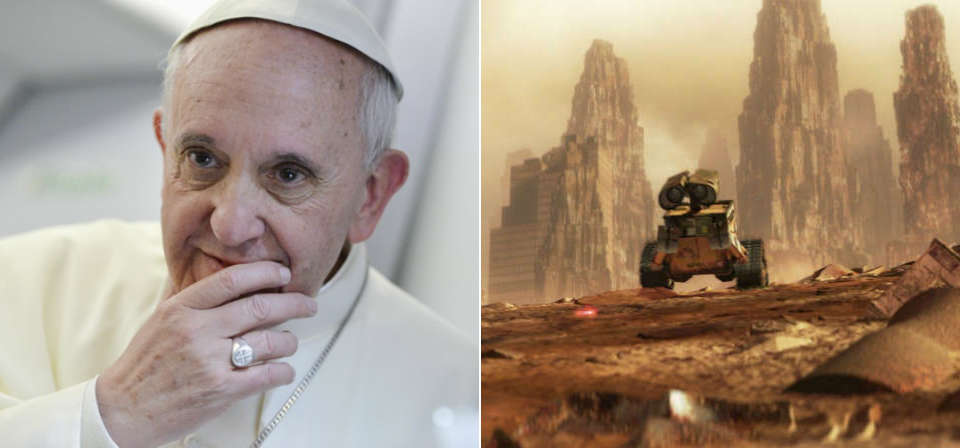Tags :: Environmental

Finding Dory (2016)
Hank the octopus is a particular standout. Hank’s squash-and-stretch movements push computer animation to yet another high-water mark, and his mad skills are highly entertaining — so entertaining, in fact, that I kind of wish the movie had been about him.

Pixar and the Pope: Pope Francis’ Laudato Si’ and Pixar’s Wall-E
“The earth, our home, is beginning to look more and more like an immense pile of filth,” Pope Francis writes. “In many parts of the planet, the elderly lament that once beautiful landscapes are now covered with rubbish” (LS 21). From the outset Wall-E looks as if it had been created with these words in mind, projecting them into a dystopian future in which rubbish has expanded to cover the entire planet, even surrounding the Earth in a halo of space debris.

The Noah controversies: questions and answers
The punning headlines write themselves: “Noah Awash in Flood of Controversy.” “Deluge of Criticism Inundates Filmmakers.” In the weeks preceding the release of Noah, controversy has swirled around the film — and will no doubt continue to do so in the weeks ahead.

Noah (2014)
Darren Aronofsky’s Noah pays its source material a rare compliment: It takes Genesis seriously as a landmark of world literature and ancient moral reflection, and a worthy source of artistic inspiration in our day.
The Lorax [video]
The Lorax in 60 seconds: My “Reel Faith” video review.

The Lorax (2012)
Well … its heart’s in the right place. Give the filmmakers that. / This isn’t The Grinch or The Cat in the Hat. / It’s not outright ugly, though it slips off the rails. / It wants to be decent. It tries. But it fails.

WALL•E (2008)
Even Pixar has never attempted anything on a canvas of this scale. From Monsters, Inc.’s corporate culture to Finding Nemo’s submarine suburbia, previous Pixar films have never strayed too far from the rhythms of real life. … WALL‑E creates a world that, despite clear connections to contemporary culture, looks and feels nothing like life as we know it, with unprecedented dramatic and philosophical scope.
Recent
- Crisis of meaning, part 3: What lies beyond the Spider-Verse?
- Crisis of meaning, part 2: The lie at the end of the MCU multiverse
- Crisis of Meaning on Infinite Earths, part 1: The multiverse and superhero movies
- Two things I wish George Miller had done differently in Furiosa: A Mad Max Saga
- Furiosa tells the story of a world (almost) without hope
Home Video
Copyright © 2000– Steven D. Greydanus. All rights reserved.